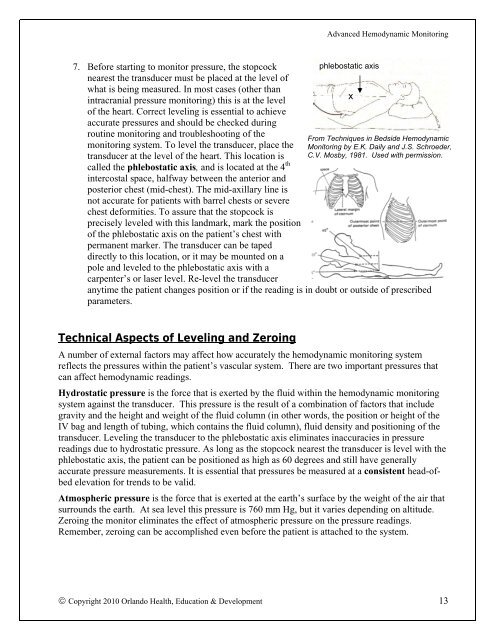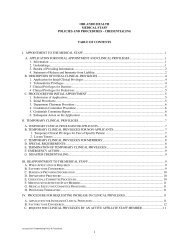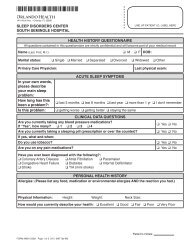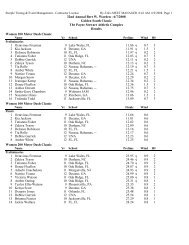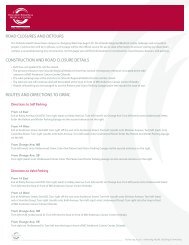Advanced Hemodynamics - Orlando Health
Advanced Hemodynamics - Orlando Health
Advanced Hemodynamics - Orlando Health
You also want an ePaper? Increase the reach of your titles
YUMPU automatically turns print PDFs into web optimized ePapers that Google loves.
<strong>Advanced</strong> Hemodynamic Monitoring<br />
7. Before starting to monitor pressure, the stopcock<br />
nearest the transducer must be placed at the level of<br />
what is being measured. In most cases (other than<br />
intracranial pressure monitoring) this is at the level<br />
of the heart. Correct leveling is essential to achieve<br />
accurate pressures and should be checked during<br />
routine monitoring and troubleshooting of the<br />
monitoring system. To level the transducer, place the<br />
transducer at the level of the heart. This location is<br />
called the phlebostatic axis, and is located at the 4 th<br />
intercostal space, halfway between the anterior and<br />
posterior chest (mid-chest). The mid-axillary line is<br />
not accurate for patients with barrel chests or severe<br />
chest deformities. To assure that the stopcock is<br />
precisely leveled with this landmark, mark the position<br />
of the phlebostatic axis on the patient’s chest with<br />
permanent marker. The transducer can be taped<br />
directly to this location, or it may be mounted on a<br />
pole and leveled to the phlebostatic axis with a<br />
carpenter’s or laser level. Re-level the transducer<br />
phlebostatic axis<br />
anytime the patient changes position or if the reading is in doubt or outside of prescribed<br />
parameters.<br />
x<br />
From Techniques in Bedside Hemodynamic<br />
Monitoring by E.K. Daily and J.S. Schroeder,<br />
C.V. Mosby, 1981. Used with permission.<br />
Technical Aspects of Leveling and Zeroing<br />
A number of external factors may affect how accurately the hemodynamic monitoring system<br />
reflects the pressures within the patient’s vascular system. There are two important pressures that<br />
can affect hemodynamic readings.<br />
Hydrostatic pressure is the force that is exerted by the fluid within the hemodynamic monitoring<br />
system against the transducer. This pressure is the result of a combination of factors that include<br />
gravity and the height and weight of the fluid column (in other words, the position or height of the<br />
IV bag and length of tubing, which contains the fluid column), fluid density and positioning of the<br />
transducer. Leveling the transducer to the phlebostatic axis eliminates inaccuracies in pressure<br />
readings due to hydrostatic pressure. As long as the stopcock nearest the transducer is level with the<br />
phlebostatic axis, the patient can be positioned as high as 60 degrees and still have generally<br />
accurate pressure measurements. It is essential that pressures be measured at a consistent head-ofbed<br />
elevation for trends to be valid.<br />
Atmospheric pressure is the force that is exerted at the earth’s surface by the weight of the air that<br />
surrounds the earth. At sea level this pressure is 760 mm Hg, but it varies depending on altitude.<br />
Zeroing the monitor eliminates the effect of atmospheric pressure on the pressure readings.<br />
Remember, zeroing can be accomplished even before the patient is attached to the system.<br />
Copyright 2010 <strong>Orlando</strong> <strong>Health</strong>, Education & Development 13


